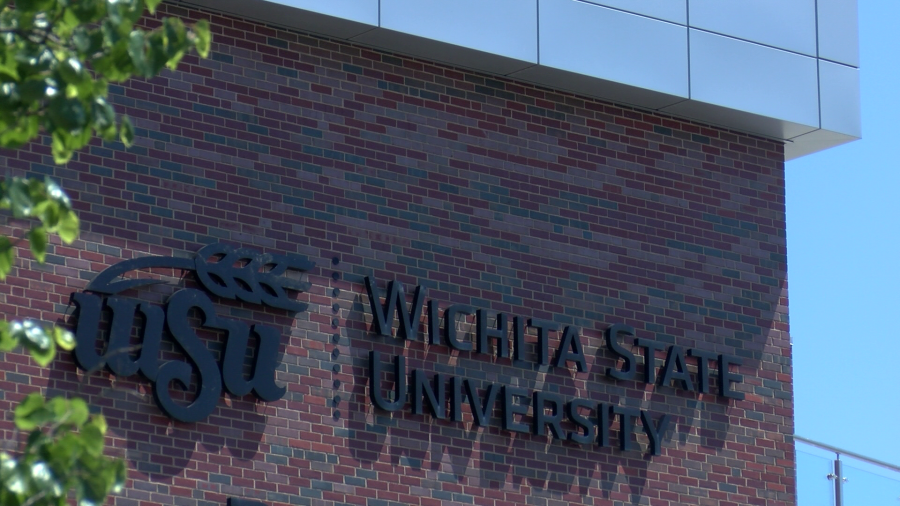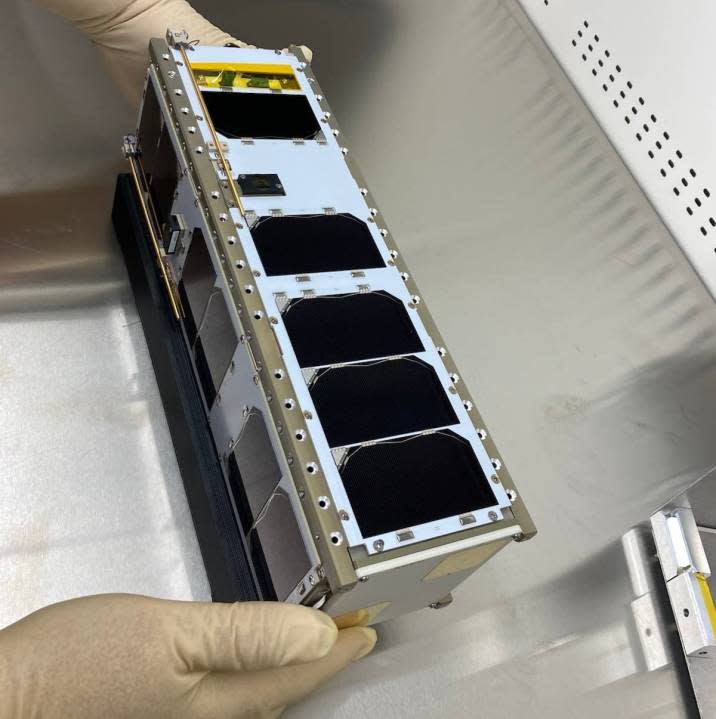WSU professor’s NASA project closer to completion

WICHITA, Kan. (KSNW) — A team at Wichita State University is a step closer to completing a project for NASA.
In 2021, Dr. Nickolas Solomey received $2 million to design a solar probe to investigate neutrinos. Neutrinos are tiny subatomic particles with no charge that have nearly no mass and are incredibly difficult to detect because they interact with almost nothing.
Neutrinos are among the most abundant particles in the universe, and we are bombarded by trillions of them daily. Normally, neutrino detectors are built deep underground to shield them from cosmic rays and other interference on the earth’s surface.
One of the most abundant sources of neutrinos in our solar system is our own sun. Rather than building larger detectors, Dr. Solomey and his team are creating a way to send a small detector really close to the sun, work that began in 2021.

His team has developed a CubeSat, a tiny satellite that will house the detector. The satellite was constructed by NanoAvionics of Lithuania.
City says Wichita air quality unhealthy on Thursday
The detector weighs just 250 grams or roughly half a pound. The CubeSat that will house it is 10 by 10 by 30 centimeters.
The satellite is scheduled to be launched into a low-earth orbit in June 2025 from Kennedy Space Center in Florida to prove the detector can operate in space and measure the rate of cosmic and gamma rays.
“This is the first major spacecraft to be at Wichita State. That’s a great first step,” says Dr. Solomey. “No one has ever operated a neutrino detector in space. This will allow us to look at the sun in a very new way. We can do experiments we can’t do here on Earth with solar neutrinos.”
Dr. Solomey’s team consists of graduate students Kyle Messick, who is working on a doctorate in aerospace; Brian Doty, Johnathan Folkerts, and Brooks Hartsock, who are all working on doctoral degrees in physics and applied math; and Tyler Nolan, who is working on his master’s degree in physics.
“My hope is that this will add ways in which we can study the core of the sun,” says Solomey.
Copyright 2024 Nexstar Media, Inc. All rights reserved. This material may not be published, broadcast, rewritten, or redistributed.
For the latest news, weather, sports, and streaming video, head to KSN-TV.

